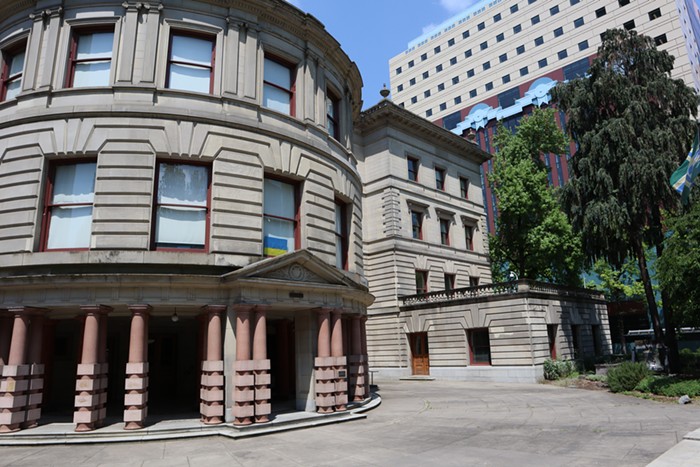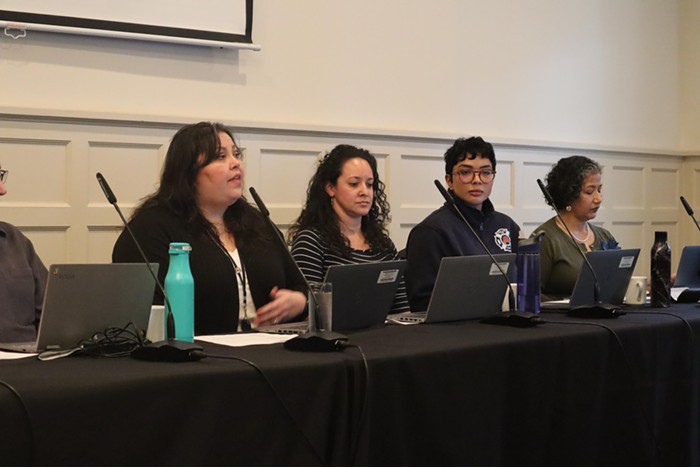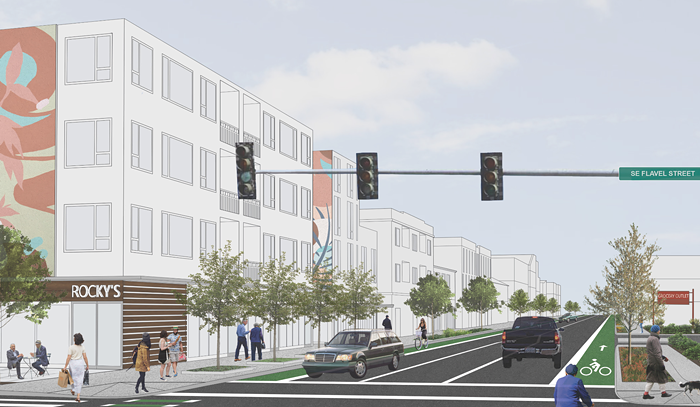AT THE DAY LABORER hire site on NE MLK, the recession is more palpable than abstract Dow Jones graphs. There are more day laborers at the site than usual, including more white American citizens who've come to the site after losing their jobs. "We've seen lots of new faces," says Site Director Ignacio Paramo.
Portland day laborer advocacy group VOZ opened the hire site last June with a $200,000 grant from the city to provide a safe, sanitary place for the workers who usually stand on street corners around industrial Southeast waiting for jobs. But the site is also a rare resource for keeping a pulse on one of Portland's most difficult to track communities.
Paramo says the number of day laborers in Portland usually declines during the winter as migrant workers head south. But at the center as well as the nearby street corners where laborers wait for work, Paramo and other organizers have seen more day laborers of late than during the busy summer months.
Over the summer, the site normally hosted about 60 workers a day and usually found day-long jobs for about 20 of them. This February and March, 70 to 80 day laborers sign up for work most days, while only four or five typically get jobs.
"We have more day laborers and fewer jobs," says Paramo. "People get desperate. They are moving out of the center to the corners—back and forth, back and forth—desperate to find a job."
Some of the immigrant day laborers have given up on Portland entirely and returned to their home countries, says Paramo. Every year, VOZ puts together a soccer team of about 20 day laborers. When Paramo tried to track down last year's members to field this season's team, most of them had left the country. The job situation in Mexican and Latin American towns is far worse but "the mentality is, 'I'm doing nothing here, I'll be doing nothing there, but at least I'll be with my family,'" says Paramo.
With Oregon's unemployment rate the worst in 23 years, the demographics of the day labor site are changing.
"Guys roll in who look like subcontractors with SUVs and it turns out they're looking for work," says Justin Shear, day laborer hire site coordinator.
When the site first opened in June, only two or three of the laborers who showed up each day spoke English as their first language. Now, 15 or so native English speakers turn up at the site most days.
"Traditionally, day laborers have been Latino but in two years maybe 'day laborer' will have a different meaning," says Shear.
Several times a week employers show up at the center, but drive off once they learn that day laborers there demand a minimum wage of $10 an hour. On Saturday morning, March 7, one woman looking for cleaners left the site after seeing the minimum wage paperwork—she could hire guys off the street corner for eight bucks.
"People have this attitude that times are tough right now, people should take what they can get," says Shear.
VOZ and the day laborers met in February to discuss whether they should lower their wage to corner levels. The workers voted to keep their wages at $10 an hour, even if it meant turning away some jobs.
With jobs scarce, the role of the day laborer hire site is changing. VOZ has started putting together classes for the dozens of men who spend hours every morning waiting at the site for nonexistent jobs. Portland State University and Reed College students teach English classes every morning in a small trailer office at the site.
Volunteer Allyn Mejia recently started showing up with paint and paper at the site three days a week to lead art classes for the day laborers. Saturday afternoon, Mejia collected a vibrant portrait of Jesus, a still-wet acrylic jungle, and a small stack of other paintings from a roomful of guys who didn't win one of the five jobs employers offered that day.
In the corner, a day laborer named Jesse Vazquez wrapped up a giant painting of a Mexican pueblo. Vazquez has not found work in weeks. In his ample downtime, Vazquez transformed this corner of the day labor center into his de facto studio during art classes, complete with canvasses found in dumpsters and a donated easel.
"I came from a small town like this one," says Vazquez, gesturing to his painting of red hills and simple houses. These days, he lives in a van parked on the streets of Portland.



















